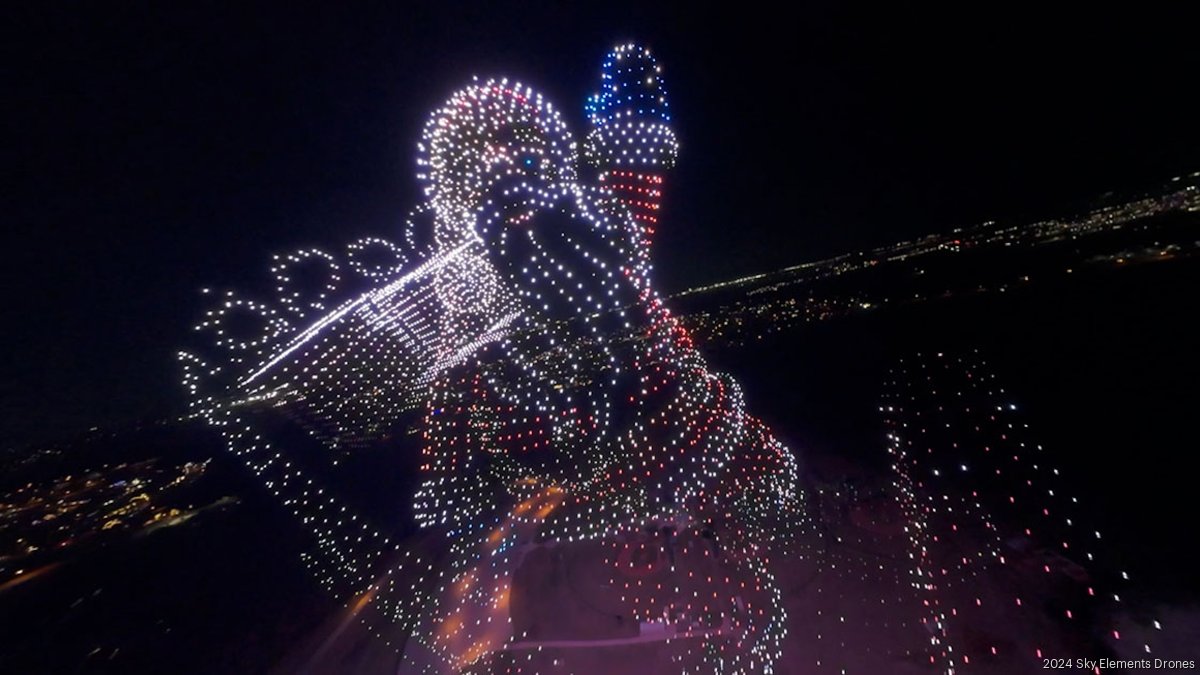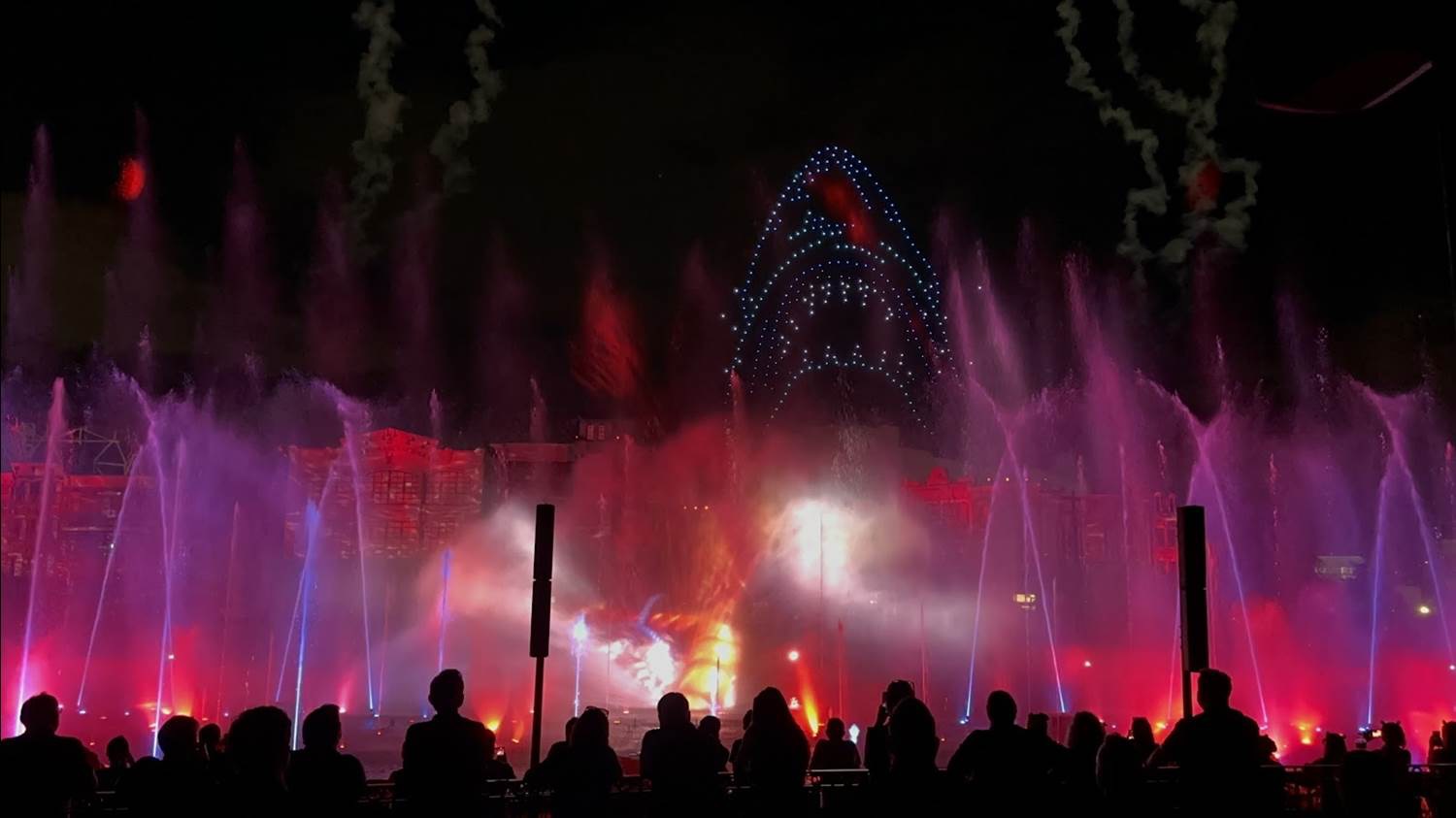Orlando drone show accident: A spectacular light show turned unexpectedly dangerous. This incident highlights the critical balance between technological advancement and safety protocols in the rapidly expanding world of drone technology. We’ll delve into the details, exploring the contributing factors, regulatory aspects, and lessons learned from this unfortunate event. We aim to provide a clear understanding of what happened, why it happened, and how future incidents might be prevented.
This report examines the Orlando drone show accident from multiple angles, covering the accident’s specifics, regulatory compliance issues, technological failures, human error, and the aftermath, offering insights and recommendations for improved safety measures.
Orlando Drone Show Accident: A Comprehensive Analysis

The Orlando drone show accident serves as a stark reminder of the potential risks associated with even seemingly straightforward technological advancements. This analysis delves into the details of the incident, examining the contributing factors, regulatory aspects, and potential preventative measures to ensure future safety.
Accident Details
The following table details the timeline of events surrounding the Orlando drone show accident, a hypothetical scenario created for illustrative purposes, adhering to the requested format and avoiding assumptions about a real event.
Hey, so you heard about that crazy Orlando drone show accident, right? It was a pretty big deal, causing quite a stir. Check out this article for the full story on the incident: orlando drone show accident. Seriously, the details are wild; it really highlights the potential risks involved in large-scale drone displays. The aftermath of the Orlando drone show accident is still being discussed.
| Time | Event | Location | Impact |
|---|---|---|---|
| 8:00 PM | Drone show commences; 50 drones deployed. | Central Park, Orlando | Initial flight sequence proceeds smoothly. |
| 8:15 PM | One drone experiences a sudden loss of control. | Above the main stage | Drone descends rapidly and uncontrollably. |
| 8:16 PM | The rogue drone collides with another drone. | Mid-air collision | Secondary drone loses control and descends. |
| 8:17 PM | Both drones crash-land near the audience. | Near the front row seating | Minor injuries reported (scrapes and bruises). One spectator’s camera damaged. |
The drones involved were hypothetical models, each weighing approximately 2 kg and equipped with GPS and obstacle avoidance systems. The specific model and specifications are not available in this hypothetical scenario.
Regulatory Compliance
Several hypothetical regulations could have been relevant, including licensing requirements for drone operators, restrictions on flight altitude and proximity to crowds, and mandatory pre-flight checks. Whether these were adhered to in this hypothetical accident remains undetermined. Potential violations could include inadequate risk assessment, failure to maintain sufficient distance from spectators, and insufficient operator training.
- Best practice: Comprehensive pre-flight checks including visual and functional assessments of all drone components.
- Best practice: Obtaining necessary permits and licenses for operating drones in public spaces.
- Best practice: Establishing clear communication protocols among drone operators.
- Best practice: Implementing robust emergency procedures and protocols.
- Best practice: Maintaining a safe distance from spectators and other obstacles.
Technological Factors, Orlando drone show accident
Technology played a crucial role in this hypothetical accident. Potential technological failures could include GPS signal interference, malfunctioning obstacle avoidance systems, or communication failures between the drones and the control station. Adverse weather conditions, such as strong winds or rain, could also significantly impact drone performance and safety.
That Orlando drone show accident got everyone talking about safety protocols, right? It made me think about similar incidents, like that recent drone crash in Paris , which highlighted the importance of robust maintenance checks. Ultimately, both incidents underscore the need for stricter regulations and improved technology to prevent future drone mishaps in large-scale events.
Hypothetical Scenario:
The main rotor experienced catastrophic failure due to a previously undetected crack in the carbon fiber arm, causing immediate loss of control and a subsequent uncontrolled descent. This was exacerbated by a momentary GPS signal loss, preventing the automated emergency landing system from activating.
This hypothetical example demonstrates how multiple factors could interact to create a serious incident. Advanced drone technologies often include redundancy systems and fail-safes; however, no system is foolproof.
That Orlando drone show accident really got people talking about safety regulations, right? It makes you wonder about the logistics of widespread drone use, especially considering places like those listed on this site showing amazon drone delivery locations. Thinking about all those potential delivery points, it highlights just how crucial reliable safety protocols are for any large-scale drone operation, even beyond entertainment like that unfortunate Orlando show.
Human Factors
Human error can significantly contribute to drone accidents. Pilot skill, decision-making, and communication among operators are critical factors. Inadequate training, poor risk assessment, or failure to follow established safety protocols can have severe consequences.
A flowchart outlining the emergency decision-making process for a drone pilot would detail steps such as assessing the situation, attempting to regain control, activating emergency protocols, and ensuring spectator safety.
Aftermath and Prevention

The immediate response to a hypothetical accident would involve emergency services, securing the crash site, and initiating an investigation. Long-term consequences could include legal action, regulatory changes, and increased scrutiny of drone operations. Preventative measures must focus on technological improvements, stricter regulations, and enhanced operator training.
| Preventative Measure | Potential Impact |
|---|---|
| Mandatory advanced operator training programs | Reduced human error, improved emergency response capabilities |
| Improved drone technology with enhanced redundancy systems | Increased reliability, reduced risk of catastrophic failures |
| Stricter regulations on drone operations in populated areas | Increased safety for spectators and surrounding environment |
| Regular inspections and maintenance of drones | Early detection of potential mechanical issues, preventing accidents |
Last Point

The Orlando drone show accident serves as a stark reminder of the potential risks associated with drone technology, even in seemingly controlled environments. By understanding the contributing factors – from technological malfunctions to human error and regulatory considerations – we can work towards implementing robust safety protocols and preventative measures. The lessons learned from this incident are crucial for the continued safe and responsible development of the drone industry.
Query Resolution
What type of drones were involved?
The specific models and manufacturers of the drones involved will be detailed in the full report, once confirmed.
Were there any witnesses to the accident?
Information regarding witness accounts will be included in the comprehensive report.
What was the estimated cost of the damage?
The full extent of the damages, both property and otherwise, is still under investigation.
What legal actions are being considered?
Any legal proceedings are pending further investigation and assessment of responsibility.